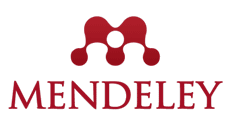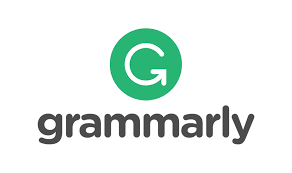The Role of Selective Underlining Strategy in Developing Critical Reading Skills Among University Students
DOI:
https://doi.org/10.57176/jn.v4i1.131Keywords:
selective underlining strategy, classroom action research, critical reading skillAbstract
Studi ini menyelidiki keefektifan selective underlining strategy dalam meningkatkan keterampilan membaca kritis di kalangan mahasiswa. Menggunakan metode penelitian tindakan kelas, bertujuan untuk minangkatkan pemahaman membaca mahasiswa dalam hal menemukan gagasan utama dan rincian pendukung melalui selective underlining strategy dalam pengajaran membaca. Penelitian ini dilaksanakan di Universitas Mulia pada mahasiswa semester dua Progran Studi Informatika melalui penelitian tindakan kelas (PTK). Peneliti mengambil 37 Mahasiswa sebagai subjek penelitian. Peneliti mengajarkan pemahaman membaca menggunakan selective underlining strategy. Temuan penelitian menunjukkan bahwa penggunaan selective underlining strategy dapat meningkatkan kemampuan membaca siswa, dari siklus I ke siklus II. Pada siklus I, pencapaian ide pokok dan rincian pendukung siswa dalam pemahaman membaca adalah 57,8%, namun setelah dievaluasi pada siklus II pemahaman membaca siswa menjadi 79,0%. Sebaliknya, gagasan utama siswa dalam pemahaman membaca dikembangkan dari siklus I ke siklus II, dimana pada siklus I pencapaian gagasan utama siswa dalam pemahaman membaca adalah 58,1%, namun setelah dievaluasi pada siklus II pencapaian gagasan utama siswa menjadi 79,7%. Pada siklus I prestasi siswa dalam menemukan rincian pendukung sebesar 57,6%, namun setelah dilakukan evaluasi pada siklus II menjadi 78,4%. Sedangkan pencapaian target standar KKM 70. Penelitian ini berkontribusi terhadap berkembangnya literatur mengenai strategi membaca efektif di perguruan tinggi dan menawarkan implikasi praktis bagi para pendidik yang berupaya meningkatkan keterampilan membaca kritis mahasiswanya. Dari temuan ini, peneliti menyimpulkan bahwa dengan menggunakan teknik Selective Underlining Strategy dapat meningkatkan prestasi pemahaman membaca mahasiswa dan membuat mahasiswa aktif dalam proses pembelajaran.
____________________________________________________________________________________
The effectiveness of the selective underlining technique in improving university students' critical reading abilities was examined in this study. Using the Selective Underlining Strategy in reading instruction, the goal of the classroom action research approach was to clarify how students' reading comprehension improved in terms of identifying the main concept and supporting details. Applying classroom action research (CAR), the study was conducted with informatics students at Mulia University during the second semester. 37 pupils were selected by the researcher to be the study's subjects. The Selective Underlining Strategy was used by the researcher to teach reading comprehension. According to the research findings, students' reading comprehension from cycle I to cycle II could be enhanced by employing the Selective Underlining Strategy. Following assessment in cycle II, the students' reading comprehension increased to 79.0% from their cycle I achievement of key ideas and supporting details of 57.8%. On the other hand, the students' major concept for reading comprehension improved from cycle I to cycle II. Specifically, after cycle II evaluation, the students' main idea for reading comprehension increased from 58.1% in cycle I to 79.7%. Students' success rate in locating supporting details was 57.6% in cycle I, but after evaluation in cycle II, it increased to 78.4%. While KKM 70 is the standard objective achievement. This study adds to the expanding corpus of research on successful reading practices in higher education and provides educators looking to improve their students' critical reading abilities with useful takeaways. Based on these results, the researcher concluded that employing the Selective Underlining Strategy technique could improve students' reading comprehension performance and engage them in the process of learning
References
Bharuthram, S. (2012). Making a case for the teaching of reading across the curriculum in higher education. South African Journal of Education, 32(2), 205-214.
Craik, F. I., & Lockhart, R. S. (1972). Levels of processing: A framework for memory research. Journal of Verbal Learning and Verbal Behavior, 11(6), 671-684.
Dunlosky, J., Rawson, K. A., Marsh, E. J., Nathan, M. J., & Willingham, D. T. (2013). Improving students' learning with effective learning techniques: Promising directions from cognitive and educational psychology. Psychological Science in the Public Interest, 14(1), 4-58.
Harmer, Jeremy. 1995. The practice of English language teaching. New Edition. New York: Longman.
Manarin, K., Carey, M., Rathburn, M., & Ryland, G. (2015). Critical reading in higher education: Academic goals and social engagement. Indiana University Press.
Paul, R., & Elder, L. (2008). The miniature guide to critical thinking concepts and tools. Foundation for Critical Thinking Press.
Saltrick, S. (2018). Reading for understanding: Critical reading in higher education. International Journal of Learning and Development, 8(2), 94-105.
Wallace, M., & Wray, A. (2021). Critical reading and writing for postgraduates (4th ed.). SAGE Publications.
Yue, C. L., Storm, B. C., Kornell, N., & Bjork, E. L. (2015). Highlighting and its relation to distributed study and students' metacognitive beliefs. Educational Psychology Review, 27(1), 69-78.
Downloads
Published
How to Cite
Issue
Section
License
Copyright (c) 2024 Sufiana, Riski Zulkarnain, Henny Oktapiyani, Alya Rifka Faradilla

This work is licensed under a Creative Commons Attribution-ShareAlike 4.0 International License.
You are free to:
- Share — copy and redistribute the material in any medium or format for any purpose, even commercially.
- Adapt — remix, transform, and build upon the material for any purpose, even commercially.
- The licensor cannot revoke these freedoms as long as you follow the license terms.
Under the following terms:
- Attribution — You must give appropriate credit , provide a link to the license, and indicate if changes were made . You may do so in any reasonable manner, but not in any way that suggests the licensor endorses you or your use.
- ShareAlike — If you remix, transform, or build upon the material, you must distribute your contributions under the same license as the original.
- No additional restrictions — You may not apply legal terms or technological measures that legally restrict others from doing anything the license permits.
Notices:
You do not have to comply with the license for elements of the material in the public domain or where your use is permitted by an applicable exception or limitation .
No warranties are given. The license may not give you all of the permissions necessary for your intended use. For example, other rights such as publicity, privacy, or moral rights may limit how you use the material.
















